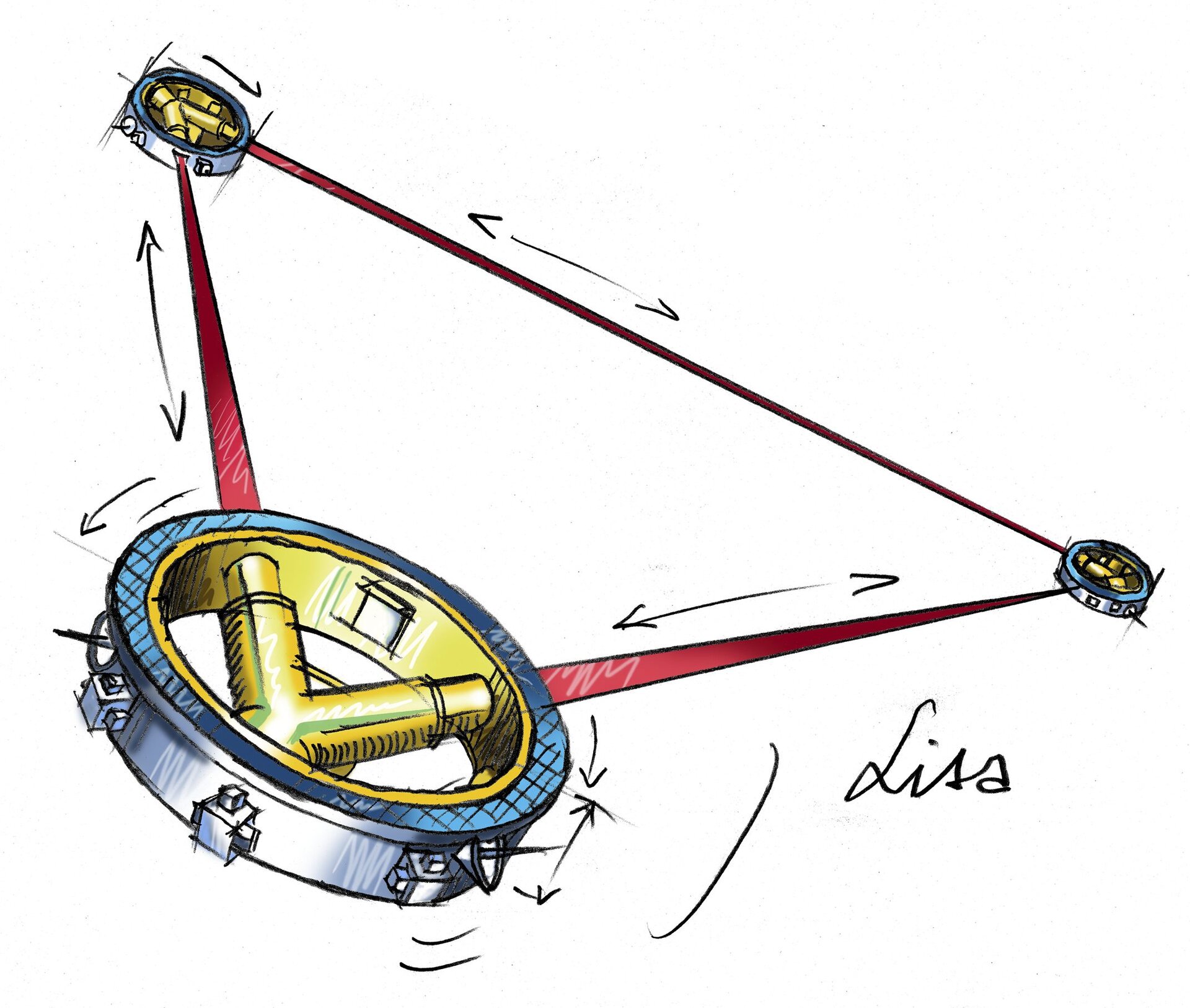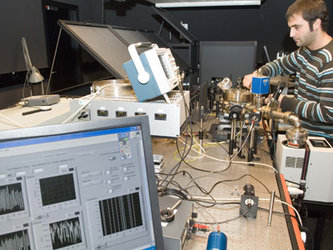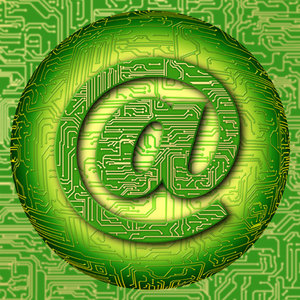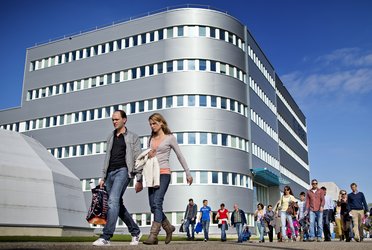What benefits does the Opto-Electronics Laboratory deliver?
The Laboratory provides independent assessment and verification of opto-electronic components in support of ESA projects and R&D activies as well as industry.
Missions being supported include two Earth-observing Earth Explorer missions: ADM-Aeolus will fly the first doppler lidar into orbit to measure atmospheric wind speeds. EarthCARE will use a lidar to acquire three-dimensional measurements of cloud cover and aerosol distribution.
Laser technology will also be crucial for the Laser Interferometer Space Antenna (LISA), a major future mission to detect gravitational waves for the first time. LISA involves a trio of spacecraft connected by laser beams across five million km, collectively forming the largest man-made structure ever made in space. The interlinked lasers will reveal tiny movements in spacecraft position due to gravitational waves, previously undetectable ripples in spacetime first predicted by Albert Einstein.
Laser research also brings benefit to the next generation of Galileo navigation satellites. Lasers are a key component of the atomic clocks at the heart of Galileo satellites. Higher-performance laser diodes will lead to more accurate clocks, delivering improved navigational accuracy to Galileo users. Enhanced atomic clocks in orbit can also be used to test general relativity and other fundamental laws of physics to a higher level of precision than ever before.
The Laboratory's work also supports progress in optical communications. Fibre optic cabling within satellites offers broader signal bandwidth at a reduced cable mass while lasers are also increasingly used for communications between satellites. Fibre optic sensor networks meanwhile can pick up internal environmental data such as temperature, pressure and tension, and are being evaluated for use on Ariane launchers.











